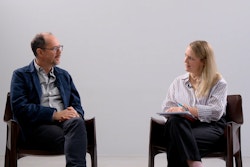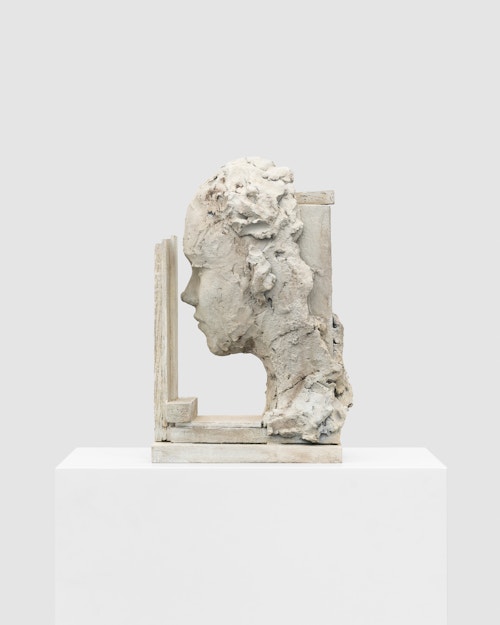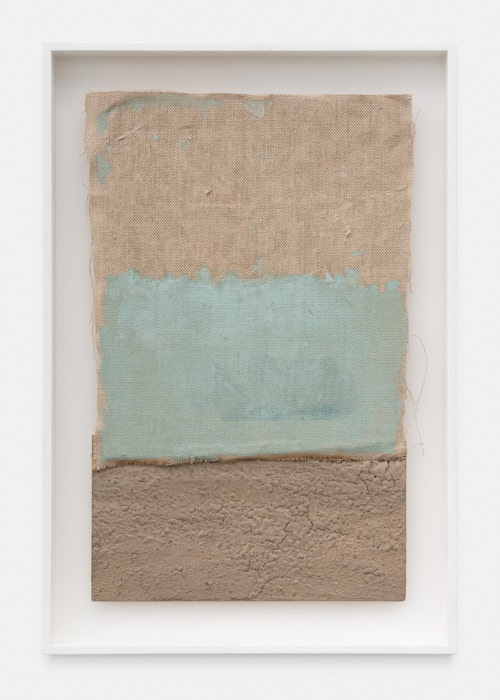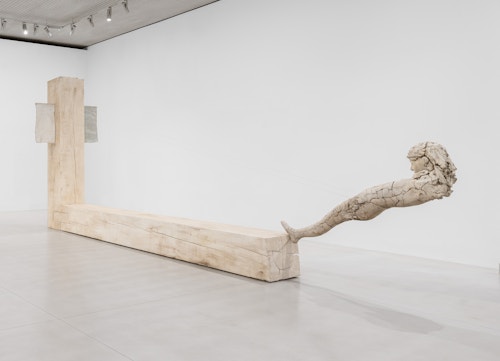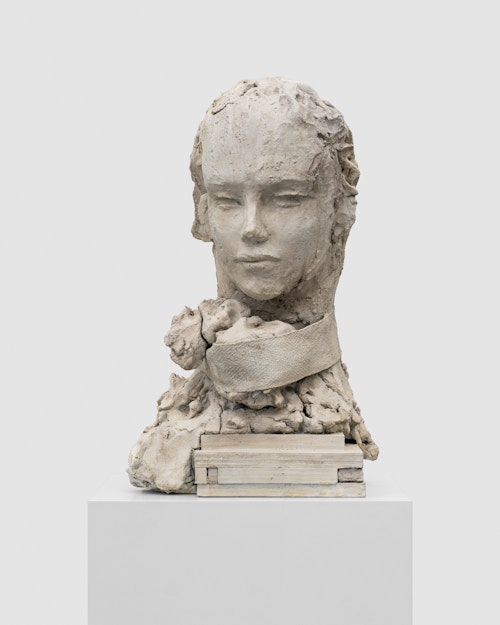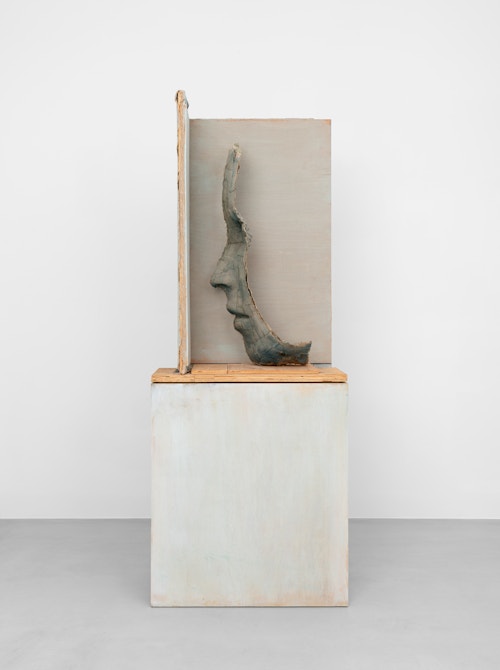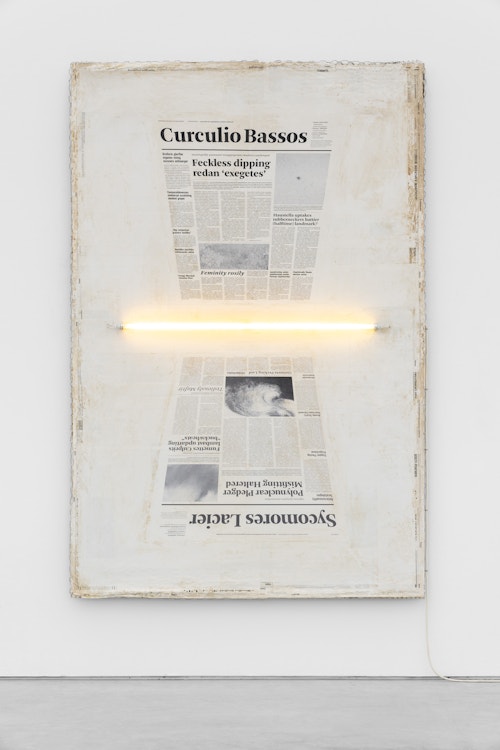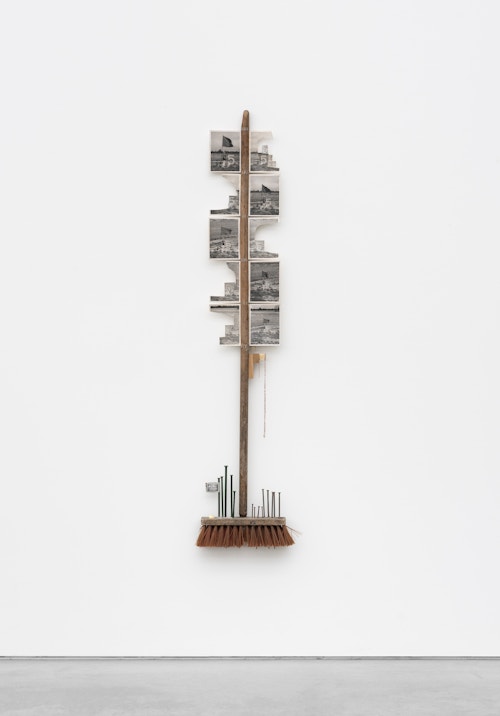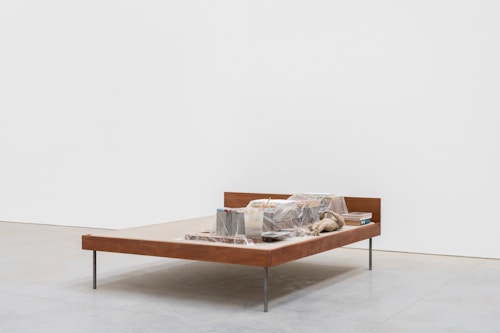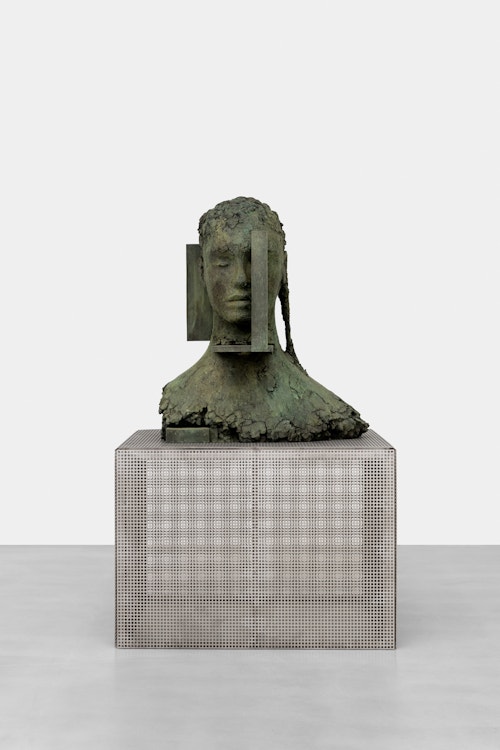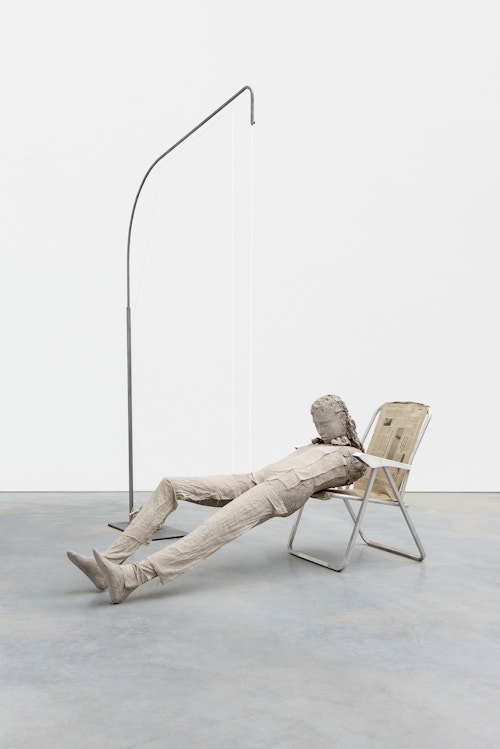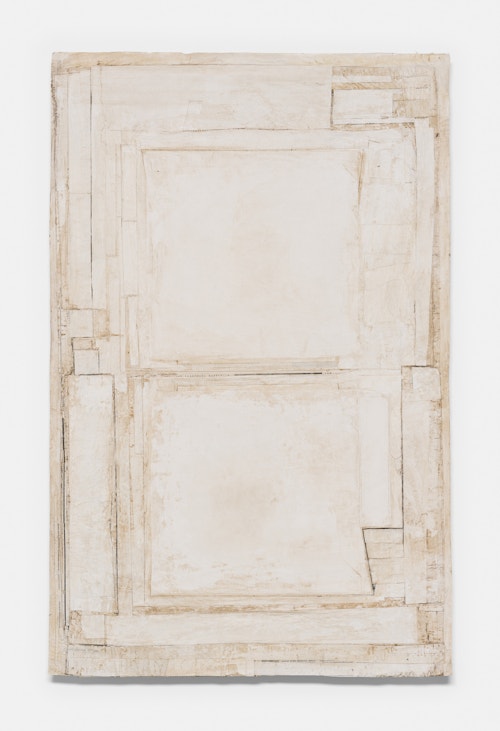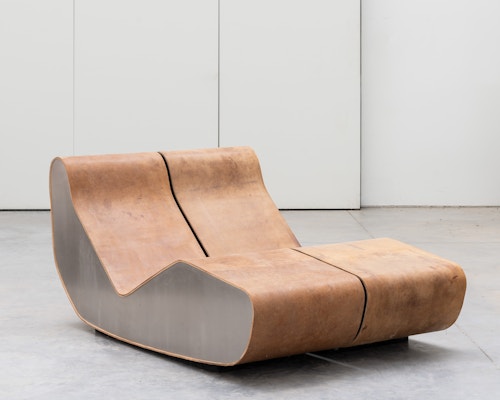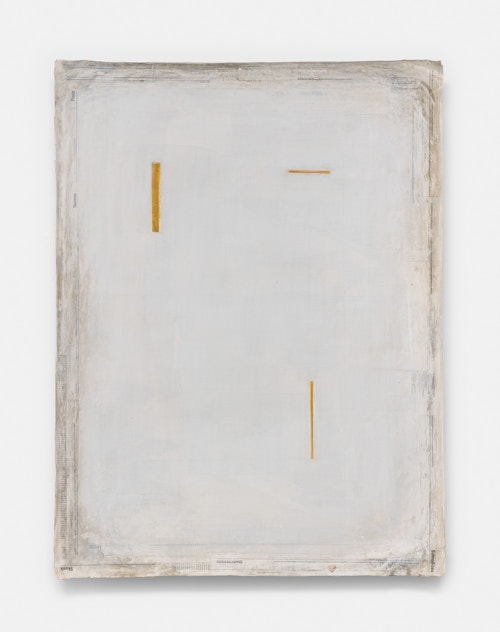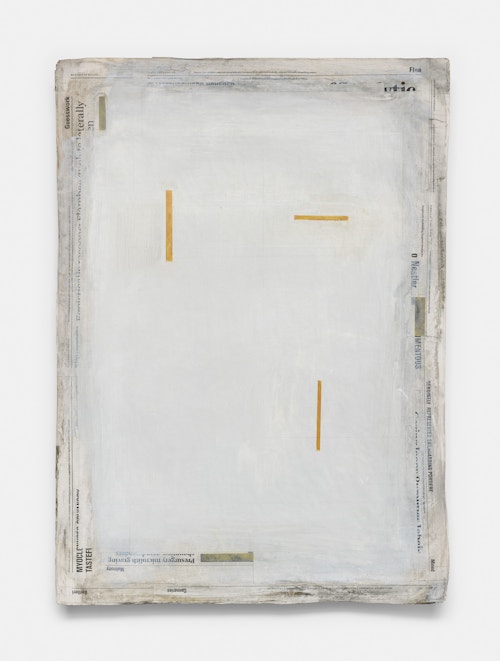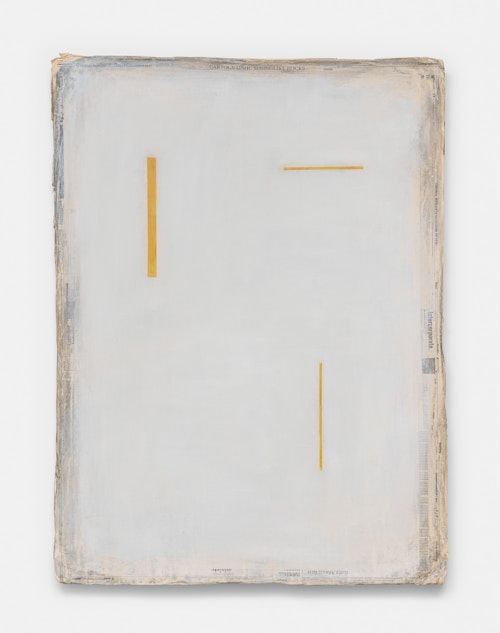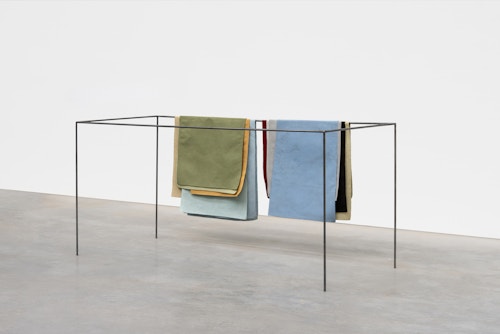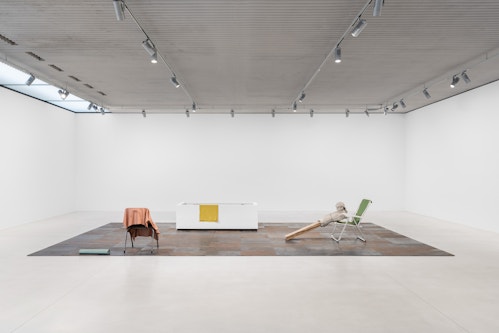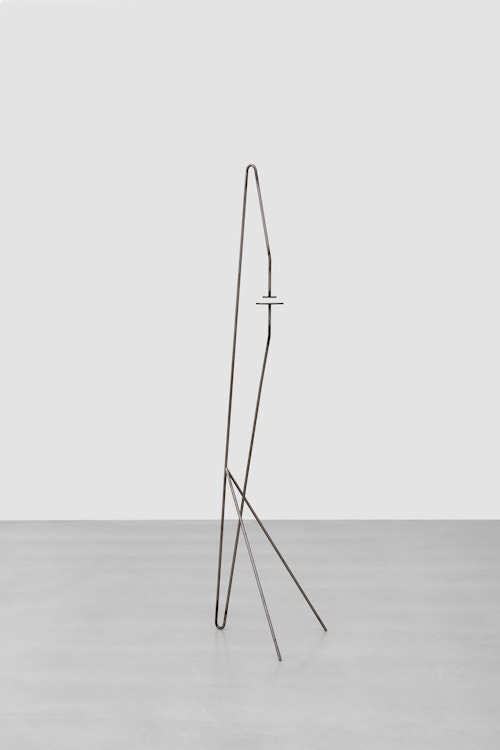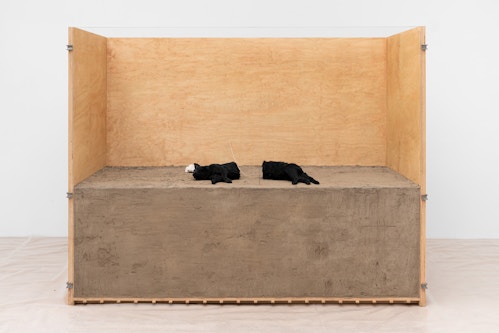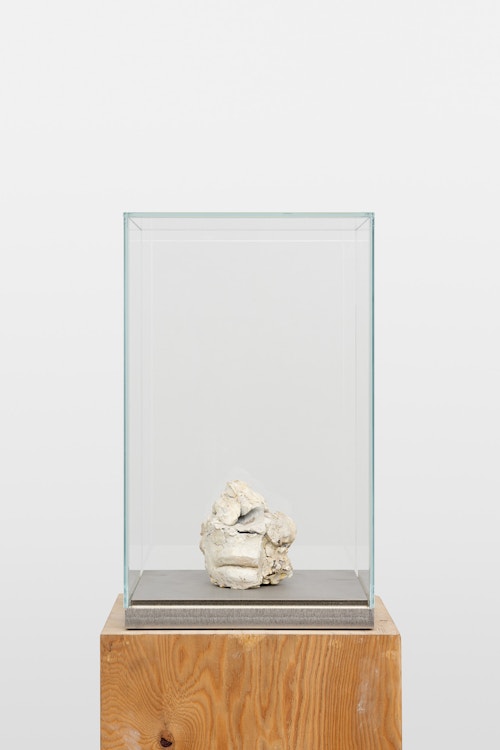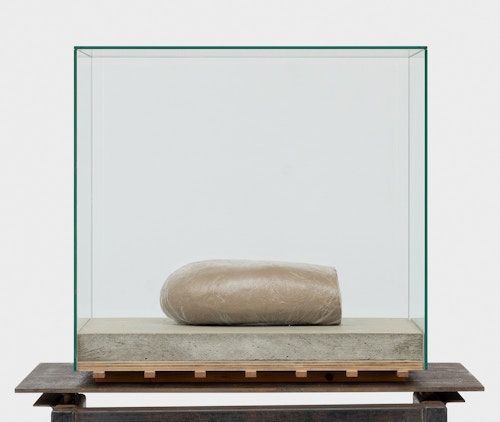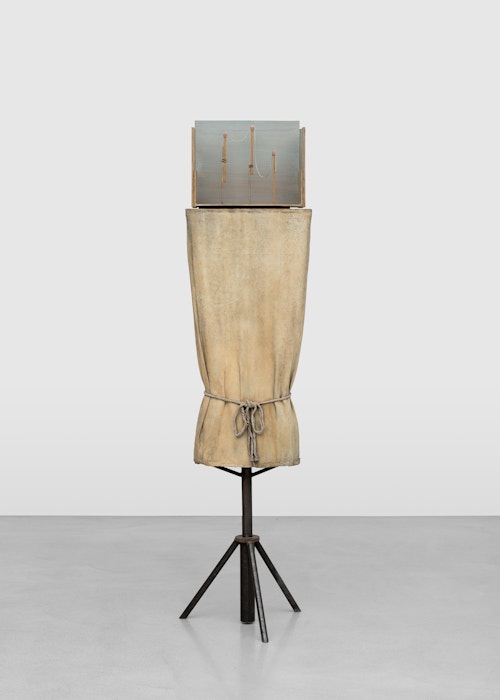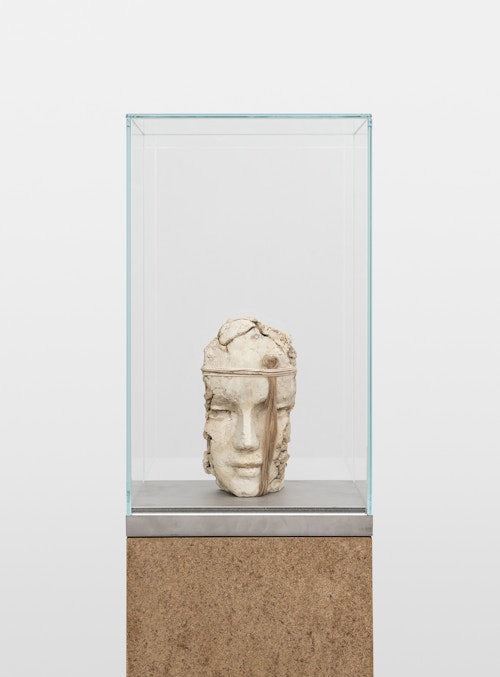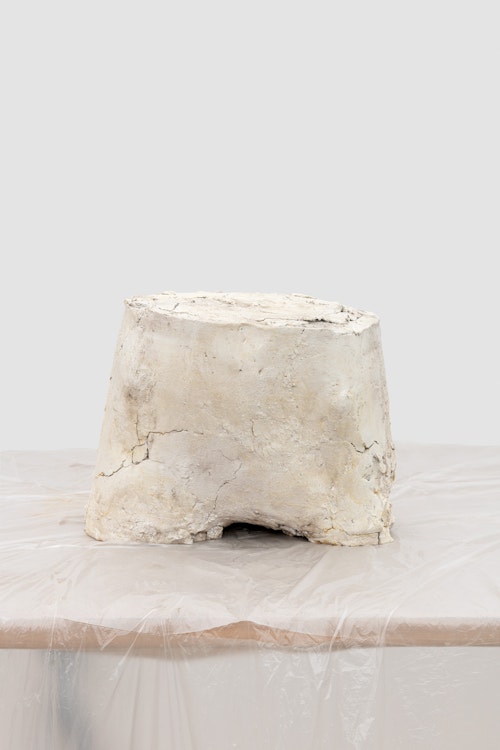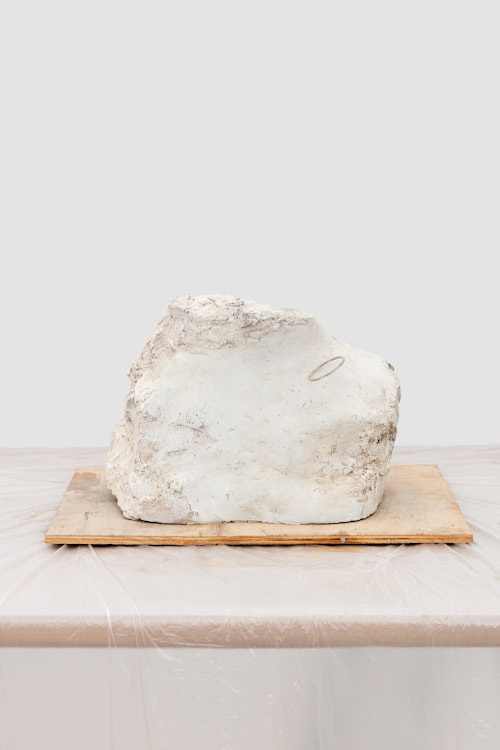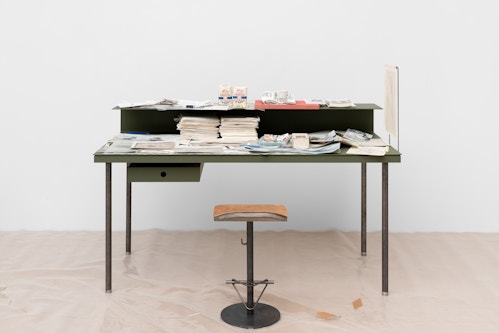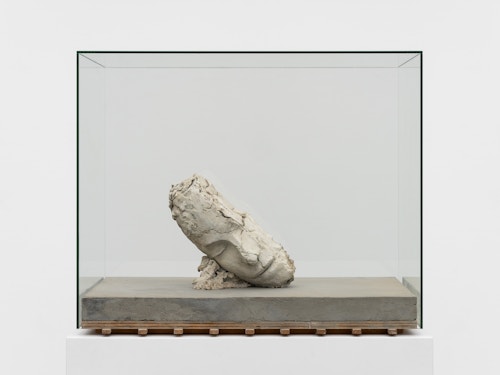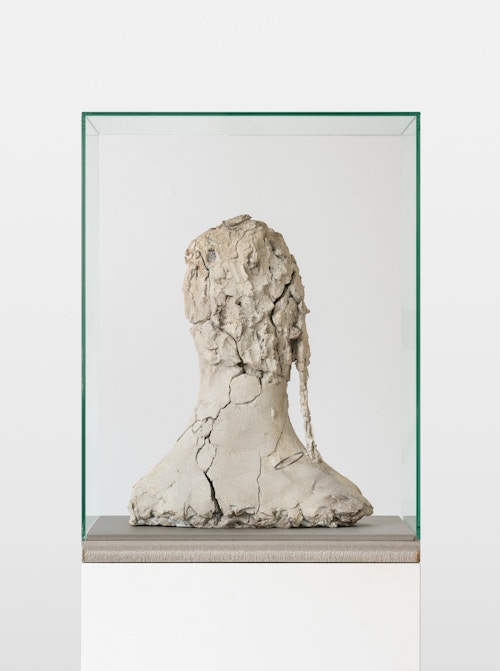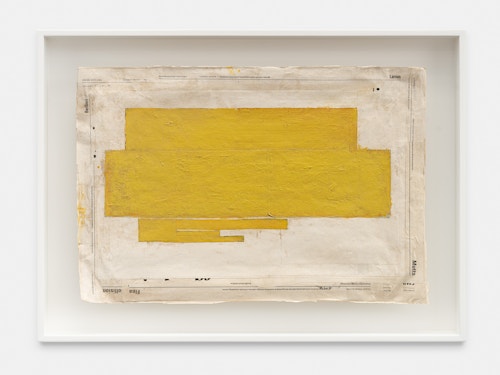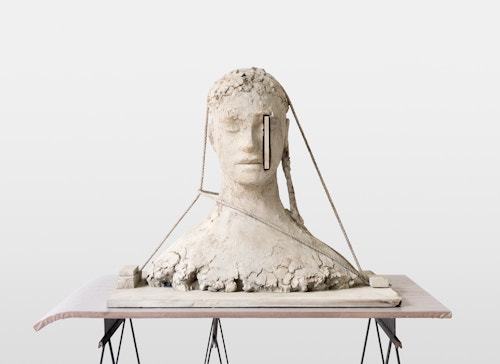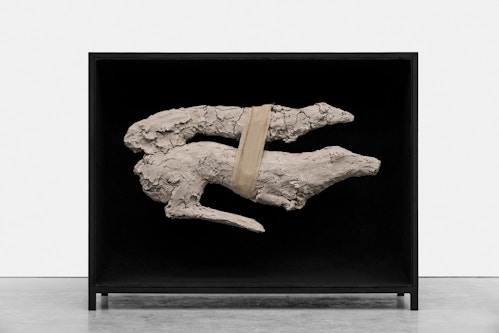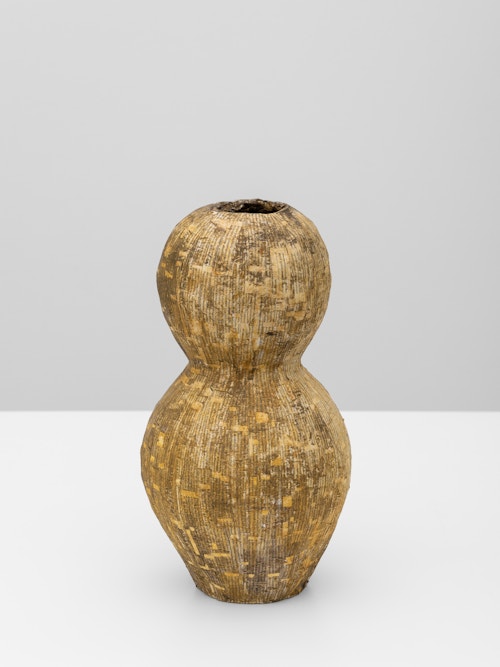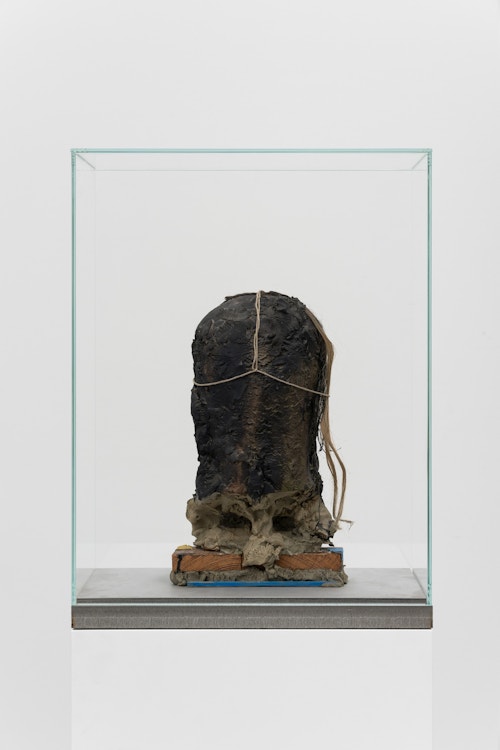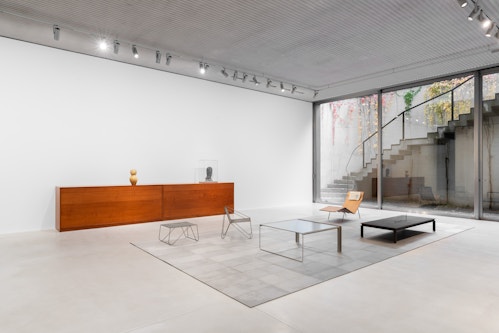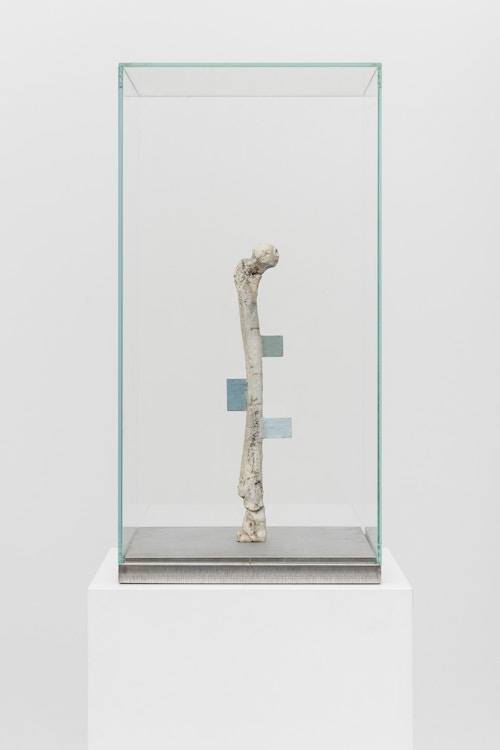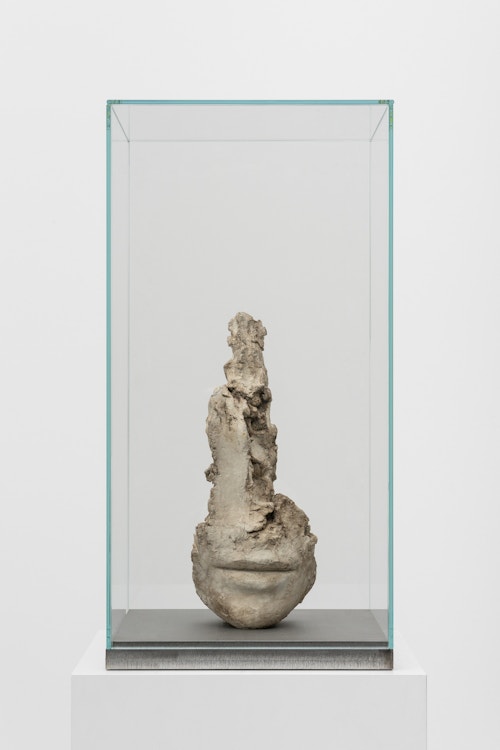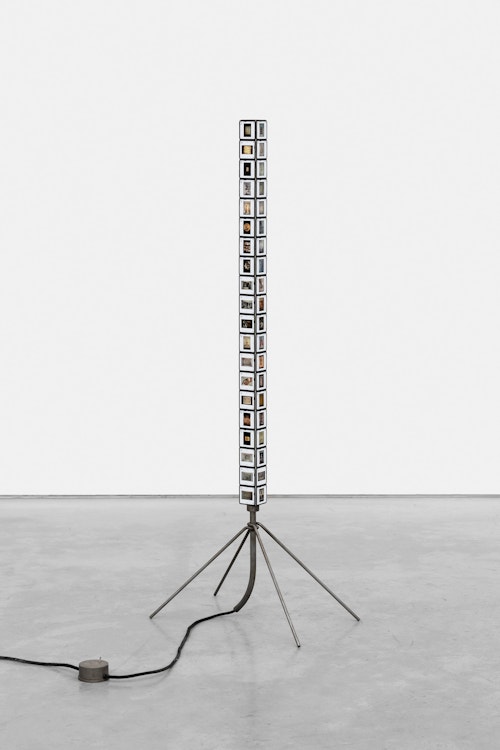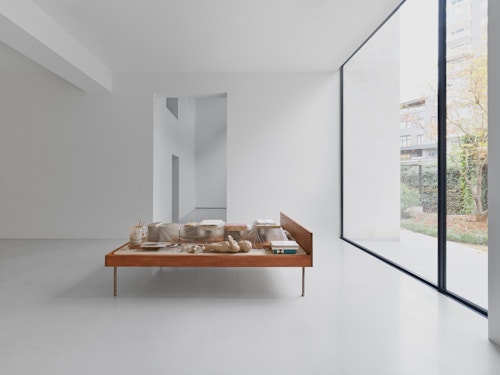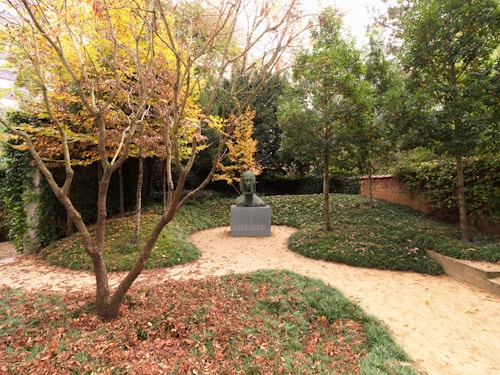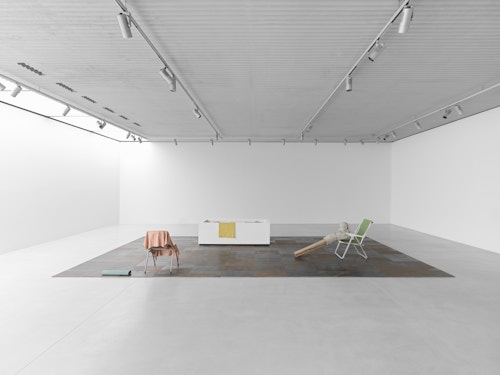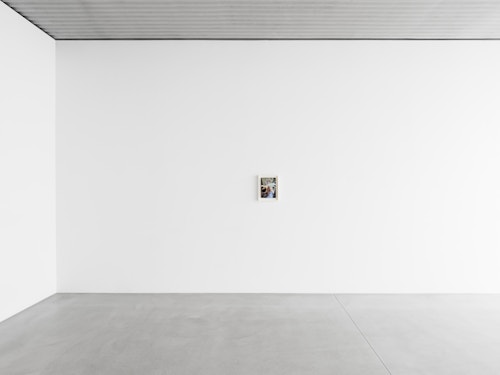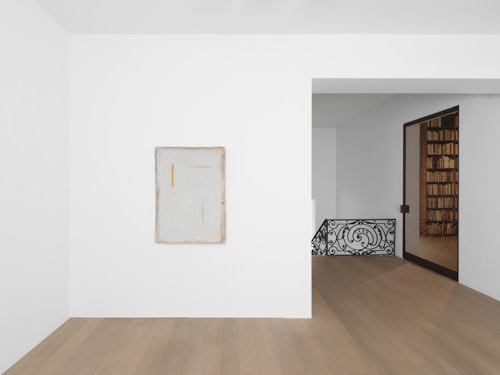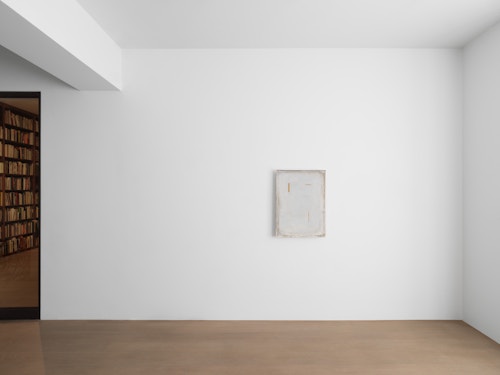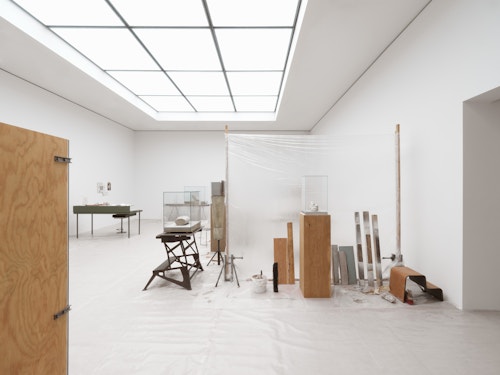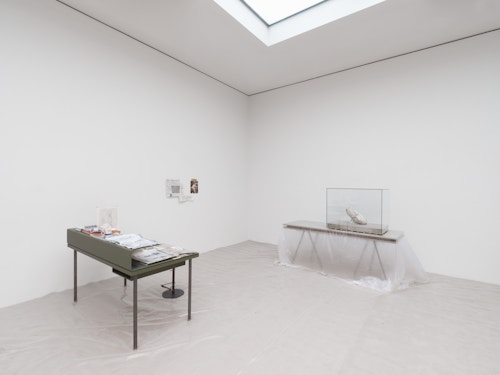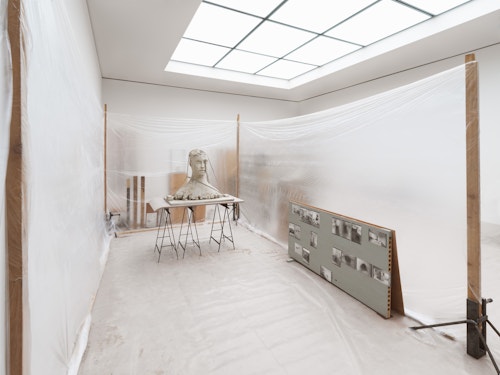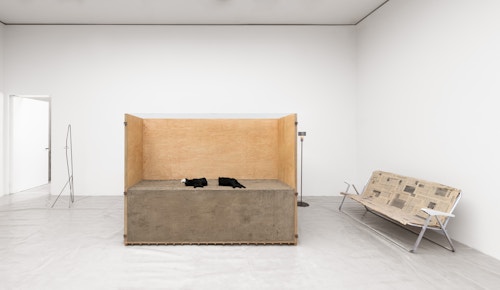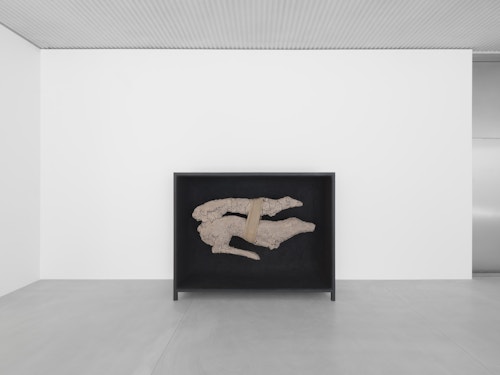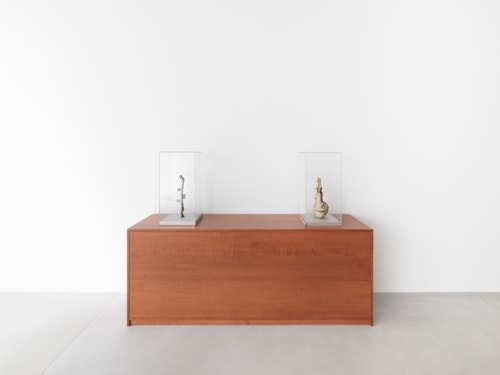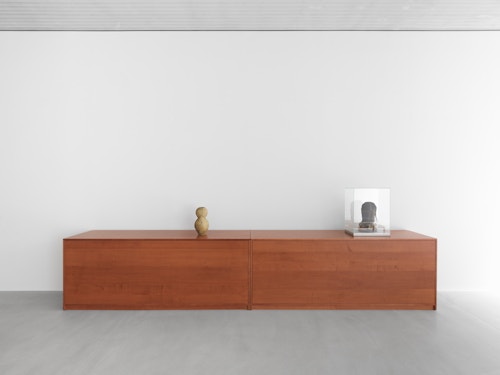
Mark Manders
Mark Manders expands his seminal ‘Self-Portrait as a Building’ project with multiple new rooms for his inaugural exhibition with the gallery. Installations referencing domestic spaces, including a bathroom, bedroom and studio, take their place alongside monumental and domestic-scale painted bronzes, mixed-media sculptures, objects, furniture and two-dimensional works. This large-scale exhibition draws together the multiple strands of practice to reveal the depth and breadth of his oeuvre.
Manders has been assembling his ‘Self-Portrait as a Building’ for almost forty years. The underlying concepts are constructed identity and the mind as a physical structure, analogous to a house or building. Every ‘room’ within the imaginary edifice – translated into the physical gallery spaces – represents a different aspect of Manders’ character or an autobiographical experience. Here, it is important to note that there are two Mark Manders: the person and the persona, the latter of whom is a fictional construct. The building is never finished; it expands ad infinitum. The rooms are furnished and filled with objects. Every element is a unique artwork, painstakingly crafted by the artist. Echoes of earlier pieces abound, while certain elements can be identified in more than one place. Such details link Manders’ works across time and space, and with each other, to form a vast network of interrelated references.
The exhibition opens in the landscape: Bonewhite Clay Head with Vertical Cloud (2024) and Figure with Two Cloud Paintings (2010-2024) both allude to the sky. The wooden structure in the latter work is familiar but unplaceable: it evokes a hangman’s frame or crucifix, possibly the beams of an architectural structure. The kouros-like figure – which references Mind Study (2010-11, Venice Biennale) – is captured in a state of suspended movement, either saved by the cord while falling or resisting its razor-sharp hold. The tension is palpable and everything is in perfect balance. The two canvases are white, like clouds. Together with the neutral hues, they lend an indeterminate status to the sculpture: a frozen moment that is both timeless and placeless. Nothing is what it seems and Manders is a master of illusion: this is neither wood nor clay. The artist models his sculptures in these materials before using the lost-wax method to cast them in bronze. They are subsequently painted by hand until the inorganic (metal) becomes indistinguishable from the organic (wood, clay).
My Bed (1992-2024) occupies the garden-facing gallery. One side is filled with architectural maquettes and a collection of objects – suggestive of an identity – the other is empty. Absence is a familiar theme in the oeuvre, as Manders explains: “All the rooms seem as if they have been left behind by someone… as if the person who has created it has just left. You constantly see someone engaged in either thought processes or physical actions. It’s almost like stepping into a set that has just been vacated. Freezing time and making someone’s thought process visible. It all revolves around that single moment, but sometimes there can be twenty or thirty years in between. Yet it all appears as if it has just happened.” This work expands upon a similar installation that Manders showed at the Van Wassenhove house in 2023. Objects such as the clay figure, books and a pot with brushes make a reappearance, only the bedding has vanished. Stripped bare, so to speak, we can see that the bedframe is wood and the mattress is canvas. Combined, they suggest another plausible reading: the work as a metaphor for painting.
With its strip light and architectural composition, Perspective Study (2005-2024) features the newspapers that Manders devised for his Room With All Existing Words (2005-2022). For this latter project, the artist designed and printed ten newspapers that contain every word in the Oxford English Dictionary, each used once but in random order, to create columns of poetic nonsense. The papers recur throughout the exhibition in various guises, appearing in Figure with Thin White Rope
(2005-2024) and compressed into Composition with All Existing Words / Perspective Study (2005-2023), shown nearby, to name but two instances.

Shadow Study (2023-2024) presides over the garden. With its ancient-looking patina, it resembles a classical sculpture or archaeological relic. Manders often creates work in which wooden elements constrain or split the human figure. These allude to the nature of memory itself: how it can be legible yet fragmented, blocked and trapped, complete yet incomplete.
Isolated Bathroom / Composition with Four Colours (2005-2023) is situated on the first floor. The metal floor is a nod to minimalist sculpture, while the figure – devoid of limbs – is suggestive of both strength (wood) and vulnerability (clay). The juxtaposition is purely visual: this too is a painted bronze. The figure links back to the earlier Ramble Room Chair (2010), while the four colours – new to the oeuvre – were inspired by the nearby reenacted and staged photograph Colour Study (2001-2023). The hues recur in Table with Towels (1999-2023) while the original photo reappears in Studio Table (2024).
This latter work, on the third floor, expands on the theme of the desk as the crucible of creativity. The bureau is littered with tools of the artist’s trade – drawings, photos and books – as well as everyday items, such as dice and sugar cubes. These are not found objects or possessions in the conventional sense of the term: everything has been meticulously crafted by the artist to replicate the original items. Painted bronzes that resemble ancient artefacts can also be found in the studio, including Falling Earring (2024), a work that visualises a fleeting moment in time: a silver hoop tumbling from a notional ear.
Floor with Prime Movers (2005-2024), on the lower ground floor, is an installation of Manders’ furniture pieces on steel tiles that, as with the bathroom, allude to minimalism. Every item has been designed and constructed by the artist: an array of objects with which to furnish the rooms of his ever-expanding ‘self-portrait’.
Mark Manders’ work reflects his ongoing exploration of identity, materiality and illusion, language and structure, but also time. While many sculptures resemble archaeological finds, others reference modernism and twentieth-century design: a dissonance that transports us backwards and forwards through the centuries. His works can be seen as spatial materialisations of inner – sometimes abstract – thoughts, feelings and emotions. References to art history, recurring motifs and the reconfiguration of previous works, all add to the sense of continuity and perpetual transformation in his oeuvre.

Mark Manders (b. 1968, Volkel, the Netherlands) currently lives and works in Ronse, Belgium. He will be the subject of two upcoming solo exhibitions: one at the Fondazione Sandretto Re Rebaudengo in Turin (October 31, 2024 – March 2025), and another at Museum Voorlinden in 2025. Manders represented the Netherlands at the Venice Biennale in 2013. He was commissioned by the Public Art Fund to create a large public sculpture for the Doris C. Freedman Plaza in Central Park, New York in 2019. Other large-scale outdoor sculptural installations are on display at the Walker Art Center in Minneapolis and at the Rokin Square in Amsterdam. Public collections include The Art Institute of Chicago, IL; Carnegie Museum of Art, PA; Kunsthaus Zürich; Museum of Modern Art, NY; Museum of Contemporary Art, LA; Pinakothek der Moderne, Munich; San Francisco Museum of Modern Art, and the Walker Art Center, MN, among others.
